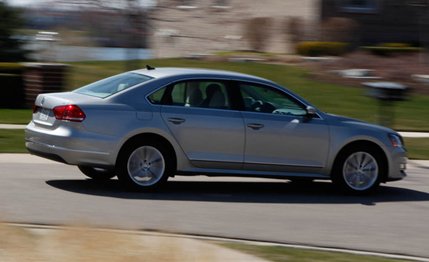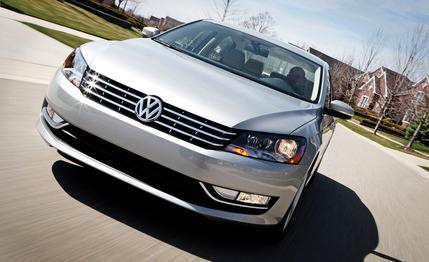 First Drive Review
First Drive Review
Let’s get one thing straight: Tennessee is not Germany. If you haven’t previously stopped to consider this remarkable fact, we suggest you take a moment to ponder it. Nashville isn’t Stuttgart, Chattanooga isn’t Wolfsburg, and that eight-footlong snake encased in Lucite and mounted in a souvenir shop near Lynchburg (population 6362, including Little Richard) isn’t a graffiti-covered piece of the Berlin Wall.
You are forgiven if the snake threw you off.
So Tennessee is not Germany, but this fall, you’ll be able to waltz into one of the state’s Volkswagen dealers and drive off in a 2012 Passat built by local labor. This is the first time VW has assembled a car in America since the 10-year crap explosion that was its New Stanton, Pennsylvania, plant (1978–1988). That facility, you may remember, cost Pennsylvania nearly $100 million in incentives and produced both perpetual labor disputes and sloppily built Rabbits that collapsed under the weight of their own stench. When the plant shut down in 1988, it was making about 60,000 cars a year, less than half its capacity.
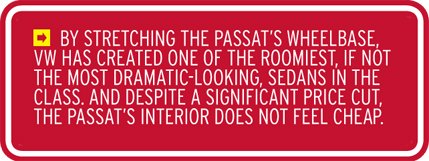
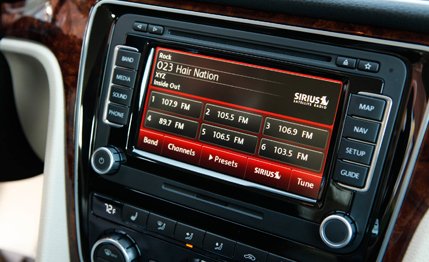
The hypermodern new plant, crafted to avoid such problems, is located in Chattanooga. Overjoyed at winning the bid, the state of Tennessee built VW its own exit off Interstate 75 and coughed up $577 million in incentives. The facility sits about 12 miles northeast of downtown ’Nooga on the site of an old munitions factory.
That last bit is fitting, as the Passat is a key part of Volkswagen’s explosive American- growth goals. VW wants to sell 800,000 vehicles here by 2018, up from last year’s 256,830. This is a huge—some would say terrifying—leap, one that won’t come from throwing cash on the hoods of a few Jettas. VW is thus remaking its lineup in what it believes to be our image. First came the larger, cheaper 2011 Jetta, which is selling at a blistering pace. Now we have the ’12 Passat, which is longer than the outgoing model, is styled like a bar of soap, and will likely cost about $7000 less than its predecessor when it hits dealers this fall. The folks in Wolfsburg apparently think we’re all penny-pinching lardbutts. Perhaps. We’ll tell you what we think, but you should pay us $5 first and wait until we finish our bacon-fat sandwiches.
The Passat’s launch took place on the roads between Chattanooga and Nashville, a serene, rolling land of tumbling hills and lifted pickup trucks. The VW’s white-bread curves blend in here, but they’d blend in anywhere, which is kind of the point. The new length is mostly between the wheels, with the wheelbase up 3.7 inches. VW gives an additional inch of legroom to the front and 1.4 inches to the rear. The Passat’s back seat now offers more legroom than those of the Toyota Camry and the Honda Accord. This is nothing if not on purpose: During the press conference, Volkswagen executives rang out the phrase “sized for America” like a team cheer, which just made us think of Sansabelt slacks. You have to wonder how far this Stars-and-Stripes theme will go. (Rumor has it that VW wanted to kick off the 2011 Detroit auto show with cowboys on horseback. Thankfully, someone said no.)
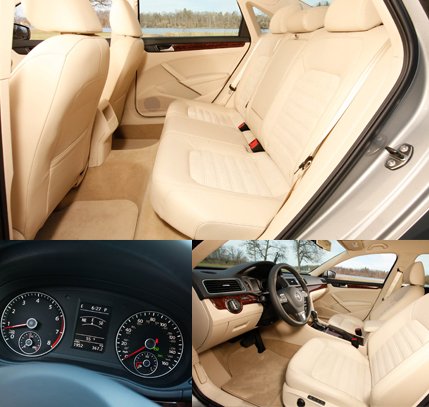
Still, the most interesting part is how anal-retentively VW has tailored this Passat for our commonwealth. The rest of the world, including Europe, gets a face-lifted version of the 2005–2010 car. The version you see here will be built and sold in North America and nowhere else. It has three bars in its grille instead of two—a last-minute addition—because focus groups felt the Hyundai Sonata’s nose looked spiffier. We get three engines (the German-market Passat offers seven), all of which have been seen before: a 170-hp, 2.5-liter five; a 140-hp, 2.0-liter turbo-diesel four; and a 280-hp, 3.6-liter 10.6-degree VR-6. There are just 16 build combinations, down from 128 in 2009, aimed at thinning special orders. And because front-wheel drive rules this segment, four-wheel drive is off the menu. Same for a wagon.
Struts support the front end, as is the class norm. At the rear, there’s an independent multilink suspension similar to what lives in the European Passat. The 2.5-liter model gets either a five-speed manual or a six-speed automatic, but the TDI can be had with a six-speed stick or DSG dual-clutch automatic. The 3.6 is only available with the latter because—you guessed it—VW says U.S. V-6 takers don’t want a clutch pedal.
Oy, we’re a fun bunch.
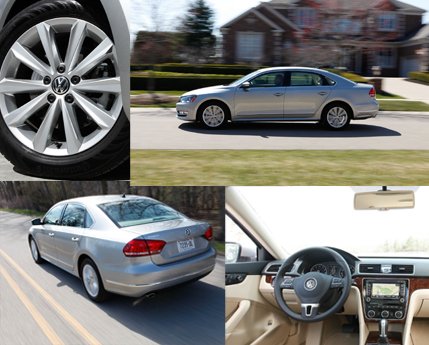
Our seat time was limited to TDI and 2.5 models, both equipped with two-pedal transmissions, 17-inch rubber, and top-zoot SEL trim. Each sucked up Tennessee’s undulating pavement with ease, the only real suspension flaw being a bounding, mildly underdamped nose on the five-cylinder car. Think of the way an inflatable punching clown rebounds. The chassis is otherwise buttoned down and nimble, with mild understeer at the limit and moderately intrusive stability control that can’t be turned off. The brakes are predictable and linear in feel, and though the pedal gains a bit of travel under hard use, performance never seems to suffer.
Engine choice here is a matter of taste. The heavier TDI (3350 pounds versus the 2.5’s 3300) is the rowdier of the two, with livelier steering, the typical diesel bloom of midrange torque, and the DSG’s giddy, right-now shifts. The five-cylinder’s relative torque deficit and heavy, low-speed steering mean it isn’t as much fun to spank down city streets, but the gap is narrowed by the diesel’s maddeningly upshift-happy gearbox. It doggedly yanks you into a higher gear and away from grunt whenever possible. Blame the TDI’s 43-mpg highway fuel-economy rating.
Amazingly, for a car that just had thousands of dollars ripped from its street price, the Passat’s interior is respectable. The back seat is big enough for two grown men to live out of. The optional 400-watt Fender audio system, with a sound profile an engineer predictably described as “purposely middle-of- the-road,” is punchy and accurate enough to please almost everybody. You see the frugalizing in a couple of places—a glove-box interior finished like a kid’s lunchbox, a cupholder lid sharp enough to double as a prison shiv—but overall, things are on par for the class. There’s none of the packed-with-goodies feel of a Sonata or an Accord, but hey, subtlety is underrated.
In the end, though, it’s the Passat’s flavorless styling that sticks in your craw. (Or is that gristle from the fat sandwich?) It’s fitting that the rear three-quarter view has a lot of Chevy Impala in it; from a certain perspective, this car—populist, affordable, patently inoffensive—is the world’s greatest Impala. Given what VW is trying to accomplish, that’s meant to be a compliment.
Note: Volkswagen representatives do not like it when you tell them this. They grow narrow-eyed and stare into the distance like Davy Crockett. Perhaps they’re looking for snakes.
